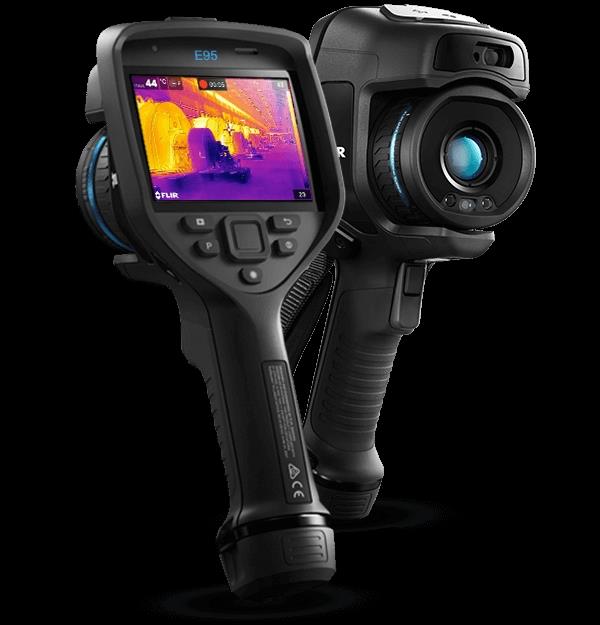How does the thermal imaging camera complete the conversion? The optical machine scanning mechanism decomposes the thermal radiation map of the scene received by the infrared telescope into a thermal radiation signal and focuses on the infrared detector, which, together with the image video system, magnifies and converts the thermal radiation signal into a video signal, and people can see a magic picture through the display. Thermal imaging cameras can identify small differences in temperature within a few 1% degrees Celsius.
Thermal imaging technology is achieved on the basis of the fact that all objects are febrile. Although many objects do not see anything from the outside, there are still hot and cold points on them. With the color on the heat map we can see the distribution of temperature, red, pink indicates a higher temperature, blue and green indicates a lower temperature.
All objects that are not at 0 degrees emit electromagnetic radiation at different wavelengths, and the higher the temperature of the object, the more intense the thermal movement of the molecule or atom, the stronger the infrared radiation. The spectrum distribution or wavelength of radiation is related to the nature and temperature of the object. The amount of radiation capacity of an object, called the radiation coefficient, is measured. Black color or darker surface color of the object, radiation coefficient, strong radiation, bright color or surface color of the object, radiation coefficient is small, weak radiation.
The human eye can only see a very narrow segment of the wavelength of electromagnetic radiation, known as the visible spectrum. And for radiation with wavelengths below 0.4um or more than 0.7um, the human eye is powerless. The wavelength of the infrared region in the electromagnetic spectrum is between 0.7um~1mm, and no one sees infrared radiation. Modern thermal imaging devices work in the Medium infrared region (wavelength 3~5um) or far infrared region (wavelength 8~12um). By detecting the infrared radiation emitted by the object, the thermal imager produces a real-time image, which provides a hot image of the scene. And the invisible radiation image is transformed into a visible, clear image of the human eye. Thermal imaging cameras are very sensitive and can detect temperature differences of less than 0.1 ℃.
At work,Thermal imaging InstrumentOptical devices are used to focus the infrared energy emitted by objects in the scene on an infrared detector, and then from infrared data from each detector element to a standard video format, which can be displayed on a standard video monitor or recorded on a videotape. Since the thermal imaging system detects heat rather than light, it can be used all-weather, and because it is a completely passive device with no light radiation or RF energy, it does not expose the user's position.
Infrared detectors fall into two categories: photonic detectors and thermal detectors. After absorbing the infrared energy, the photon detector directly produces the electrical effect, and the thermal detector absorbs the infrared energy and produces the temperature change, which produces the electrical effect. The electrical effect caused by temperature change is related to the properties of the material. Photon detectors are very sensitive and their sensitivity depends on their own temperature. To maintain high sensitivity, the photon detector must be cooled to a lower temperature. The coolant commonly used is Stailing (Stirling) or liquid nitrogen.
Thermal detectors generally do not have the same high sensitivity as photonic detectors but also have good enough performance at room temperature, so no low temperature cooling is required.

Related Industry Knowledge
- Three resolution of the thermal imaging camera
- The application of Fluke thermal imaging camera in architecture
- Techniques for measuring Infrared Thermal Imager
- Technical index of infrared thermal imaging camera
- What are the advantages of thermal imaging cameras?
- How to choose an on-line thermal imaging camera
- Composition and Characteristics of thermal imager
- Wide application of infrared thermal imaging camera
- What are the applications of thermal imaging cameras in the electronics industry
